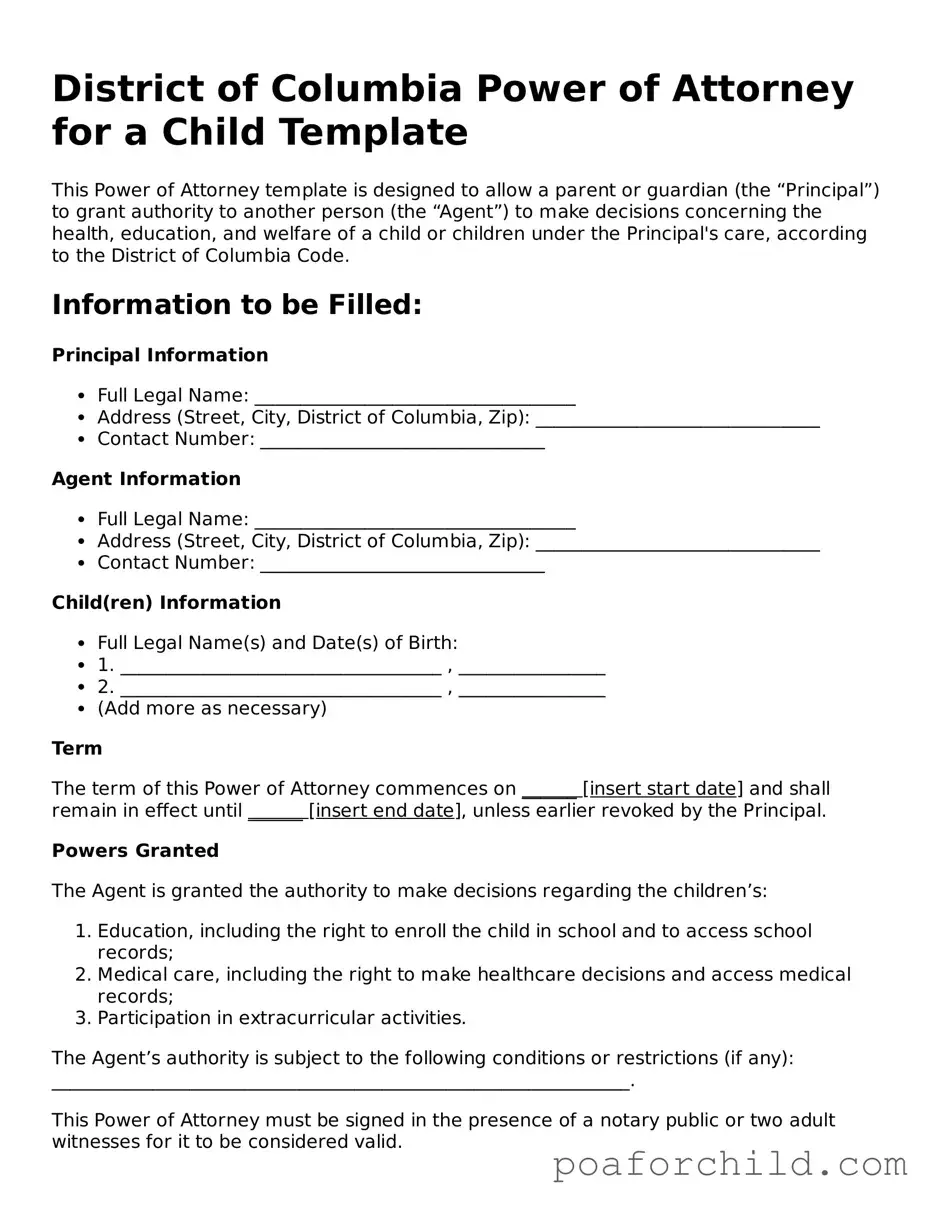Detailed Guide for Using District of Columbia Power of Attorney for a Child
When preparing to grant someone else the authority to make decisions for your child, a Power of Attorney (POA) form is a crucial document. Filing out the District of Columbia Power of Attorney for a Child form requires attention to detail to ensure all information is accurate and the document is legally binding. This process can empower a trusted individual to act in the best interest of your child, particularly when you are not available to do so. Follow these steps closely to complete the form properly.
- Gather all necessary information including the full legal names and addresses of the parent(s) or guardian(s), the child, and the appointed attorney-in-faction (the person who will be granted the power of attorney).
- Download or obtain a copy of the District of Columbia Power of Attorney for a Child form. Ensure you have the latest version by checking the District of Columbia's official government website.
- Fill in the date the power of attorney will begin at the top of the form.
- Enter the full legal names and addresses of the parent(s) or legal guardian(s) in the designated spaces.
- Provide the full legal name, date of birth, and address of the child being represented by the power of attorney.
- Specify the full legal name and address of the attorney-in-fact. This person will be granted the authority to make decisions on behalf of the child.
- Detail the specific powers being granted to the attorney-in-fact. Be as clear and precise as possible to avoid any future misunderstandings.
- If there are specific powers that are not being granted, clearly state these limitations in the appropriate section of the form.
- Include the duration of the power of attorney. If it is meant to end on a specific date, mention this clearly.
- Both the parent(s) or guardian(s) and the attorney-in-fact must sign and date the form in front of a notary public.
- Have the form notarized to ensure its legal validity.
- Keep a copy of the completed form for your records and provide the attorney-in-fact with a copy to act on your behalf.
Once the form is filled out, it establishes the legal authority for the appointed individual to make decisions for the child in the areas you have specified. It is recommended to review the form periodically and update it as necessary to reflect any changes in the situation or in the wishes of the parent(s) or guardian(s). Proper completion and regular review ensure that the best interests of the child can be continuously met.
